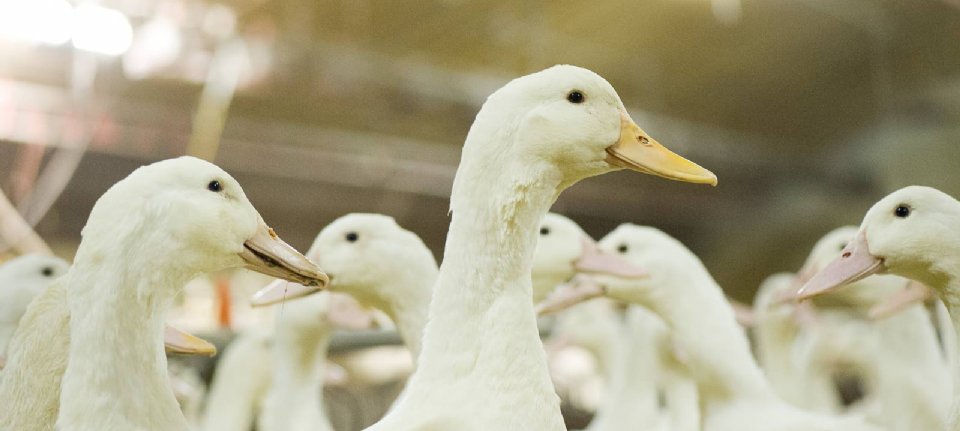–
News
© Photography Twan Wiermans
–
A daily mortality of 0.3 percent in ducks is already a good indication of bird flu. Just like a decrease in feed and water intake or a decrease in egg production in breeding and multiplication flocks. This is the conclusion of research by epidemiologist Armin Elbers of Wageningen Bioveterinary Research (WBVR).
–
Bird flu causes serious illness and high mortality in poultry. Reporting a suspicious situation on a poultry farm in good time is therefore important to prevent the bird flu virus from spreading to other poultry farms.
The general rule for laying hens, breeding stock, broilers and turkeys is that a suspected avian flu must be reported if a mortality exceeds 3 percent per week. That rule was tightened up last year.
Three times weekly average
Notification became mandatory if the mean two-day mortality was higher than three times the weekly mean. It was not known whether these guidelines also applied to ducks. Commissioned by the Ministry of Agriculture, Nature and Food Quality (LNV), WBVR has investigated which production indicators can serve as an alarm signal for a suspicion of bird flu in duck farms.
Bird flu outbreaks in kept ducks and geese usually do not lead to serious illness, which can jeopardize the timely reporting of a suspicious situation. In recent years, however, in several countries, including the Netherlands, increased mortality and decrease in production have been seen in bird flu outbreaks on duck farms.
To get a good indicator, WBVR collected data on daily mortality, egg production, feed intake and water intake of flocks of meat ducks and breeding ducks from the Netherlands and abroad. This poultry was or was not infected with bird flu. From the comparison of the data from the uninfected and infected flocks it was then possible to establish indicators for a possible infection with bird flu.
Mortality, decrease in feed and water intake and egg production
‘For flocks of meat ducks, after the first week of life, a daily loss of more than 0.3 percent is a good indicator of a bird flu infection,’ says epidemiologist Elbers of WBVR. ‘After the first week of life, decreases in average daily feed or water intake greater than 7 grams or 14 milliliters, respectively, are sensitive indicators of bird flu infection.’
For breeding ducks, data was limited. In three German flocks of breeding ducks there was hardly any loss, while an English flock of ducks showed a rapidly increasing mortality after bird flu infection. ‘The application of a daily mortality rate of more than 0.3 percent as a notification threshold is therefore also recommended for breeding and multiplication ducks,’ says Elbers. ‘A drop in daily egg production of more than 9 percent proved to be an even more effective indicator of an avian flu outbreak in all flocks of breeding and breeding ducks.’
– .


